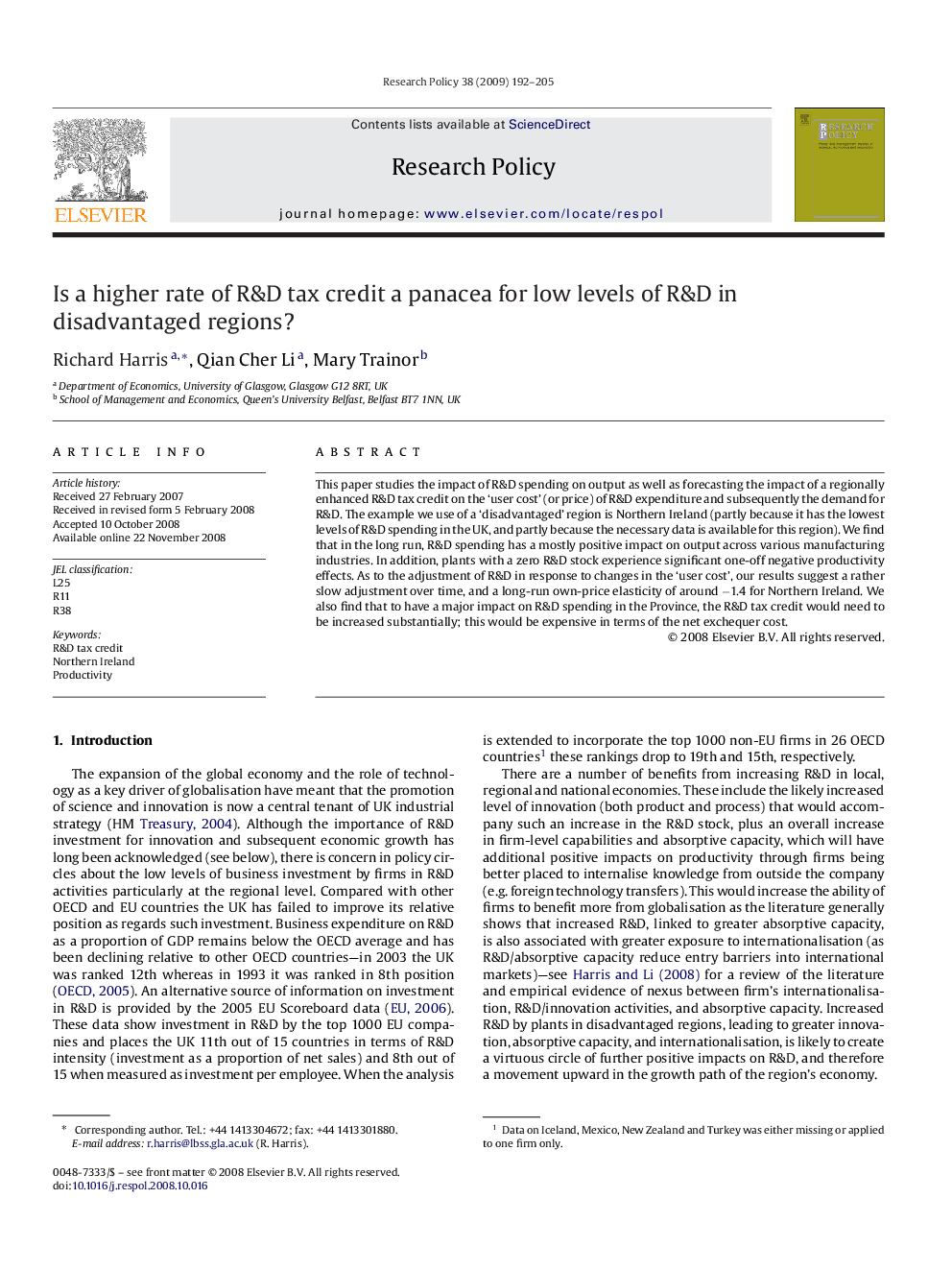| Article ID | Journal | Published Year | Pages | File Type |
|---|---|---|---|---|
| 985385 | Research Policy | 2009 | 14 Pages |
This paper studies the impact of R&D spending on output as well as forecasting the impact of a regionally enhanced R&D tax credit on the ‘user cost’ (or price) of R&D expenditure and subsequently the demand for R&D. The example we use of a ‘disadvantaged’ region is Northern Ireland (partly because it has the lowest levels of R&D spending in the UK, and partly because the necessary data is available for this region). We find that in the long run, R&D spending has a mostly positive impact on output across various manufacturing industries. In addition, plants with a zero R&D stock experience significant one-off negative productivity effects. As to the adjustment of R&D in response to changes in the ‘user cost’, our results suggest a rather slow adjustment over time, and a long-run own-price elasticity of around −1.4 for Northern Ireland. We also find that to have a major impact on R&D spending in the Province, the R&D tax credit would need to be increased substantially; this would be expensive in terms of the net exchequer cost.
